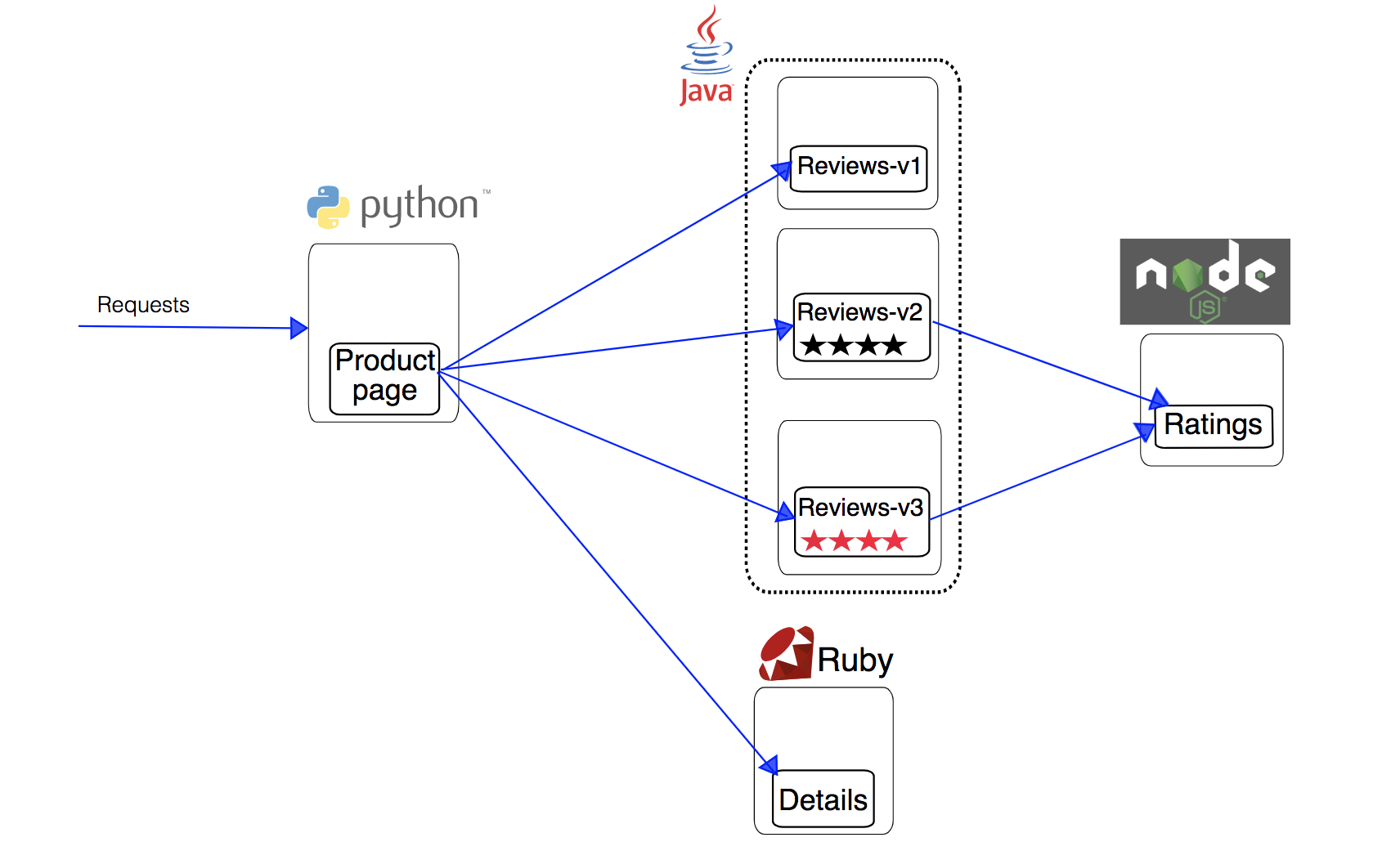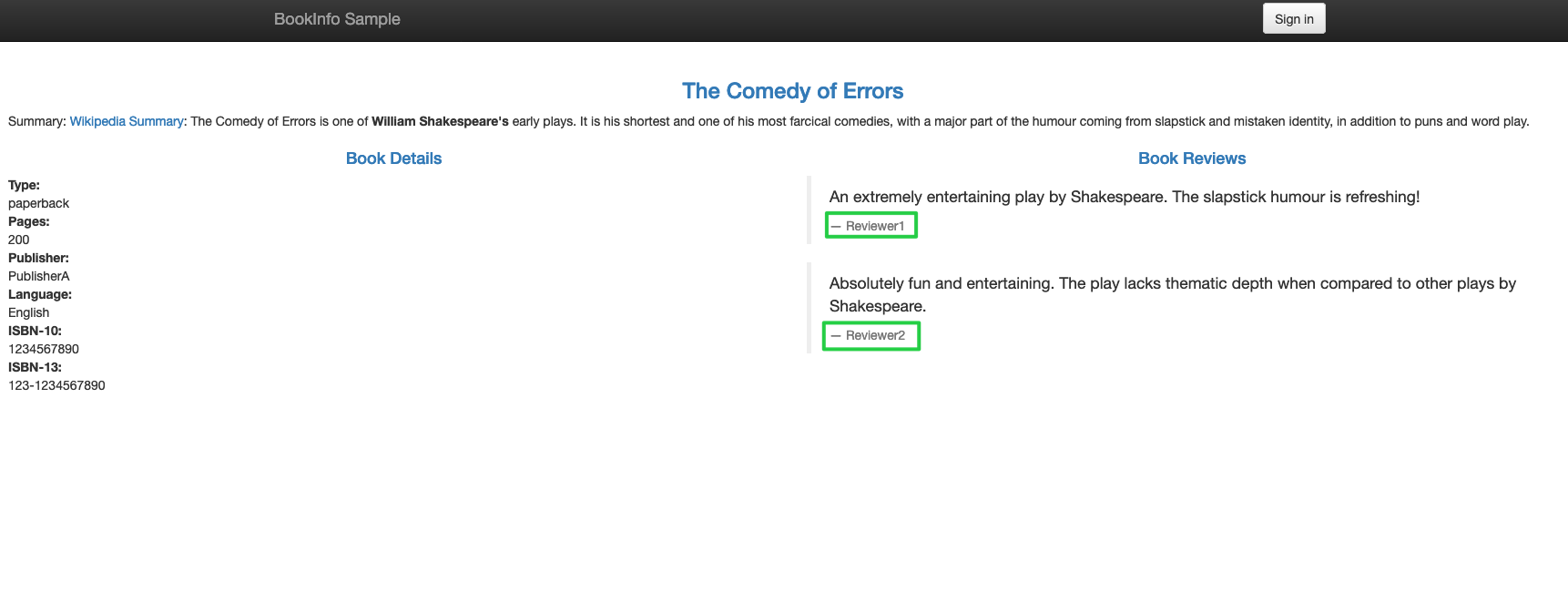
Deploy and Access Bookinfo
Istio, as an open-source service mesh solution, provides powerful features of traffic management for microservices. The introduction of traffic management from the official website of Istio is as follows:
Istio’s traffic routing rules let you easily control the flow of traffic and API calls between services. Istio simplifies configuration of service-level properties like circuit breakers, timeouts, and retries, and makes it easy to set up important tasks like A/B testing, canary rollouts, and staged rollouts with percentage-based traffic splits. It also provides out-of-box failure recovery features that help make your application more robust against failures of dependent services or the network.
To provide consistent user experiences of managing microservices, KubeSphere integrates Istio on the container platform. This tutorial demonstrates how to deploy a sample application Bookinfo composed of four separate microservices and access it through a NodePort.
Prerequisites
You need to enable KubeSphere Service Mesh.
You need to finish all tasks in Create Workspaces, Projects, Users and Roles.
You need to enable Application Governance. For more information, see Set a Gateway.
Note
You need to enable Application Governance so that you can use the Tracing feature. Once it is enabled, check whether an annotation (for example,nginx.ingress.kubernetes.io/service-upstream: true) is added for your Route (Ingress) if the Route is inaccessible.
What is Bookinfo
Bookinfo is composed of the following four separate microservices. There are three versions of the reviews microservice.
- The productpage microservice calls the details and reviews microservices to populate the page.
- The details microservice contains book information.
- The reviews microservice contains book reviews. It also calls the ratings microservice.
- The ratings microservice contains book ranking information that accompanies a book review.
The following figure shows the end-to-end architecture of the application. For more information, see Bookinfo Application.

Hands-on Lab
Step 1: Deploy Bookinfo
Log in to the console as
project-regularand go to your project (demo-project). Go to Apps under Application Workloads, and then click Deploy Sample App on the right of the page.Click Next in the displayed dialog box where required fields are pre-populated and relevant components are already set. You do not need to change the settings and just click Create on the final page.
Note
KubeSphere creates the hostname automatically. To change the hostname, hover over the default route rule and click to edit it. For more information, see Create a Microservices-based App.
to edit it. For more information, see Create a Microservices-based App.In Workloads, verify that the status of all four Deployments is
Running, indicating that the app has been created successfully.Note
It may take a few minutes before the Deployments are up and running.
Step 2: Access Bookinfo
In Apps, go to Composed Apps and click the app
bookinfoto see its details page.Note
If you do not see the app in the list, refresh your page.On the details page, record the hostname and port number of the app, which will be used to access Bookinfo.
As the app will be accessed outside the cluster through a NodePort, you need to open the port in your security group for outbound traffic and set port forwarding rules if necessary.
Edit your local host file (
/etc/hosts) by adding an entry in it to map the hostname to the IP address. For example:139.198.179.20 productpage.demo-project.192.168.0.2.nip.ioNote
Do not copy the preceding content to your local host file. Replace it with your own IP address and hostname.When you finish, click Access Service to access the app.
On the app details page, click Normal user in the lower-left corner.
In the following figure, you can notice that only Reviewer1 and Reviewer2 are displayed without any stars in the Book Reviews section. This is the status of this app version. To explore more features of traffic management, you can implement a canary release for this app.

Note
KubeSphere provides three kinds of grayscale strategies based on Istio, including blue-green deployment, canary release and traffic mirroring.
Feedback
Was this page Helpful?
Receive the latest news, articles and updates from KubeSphere
Thanks for the feedback. If you have a specific question about how to use KubeSphere, ask it on Slack. Open an issue in the GitHub repo if you want to report a problem or suggest an improvement.












 Previous
Previous
